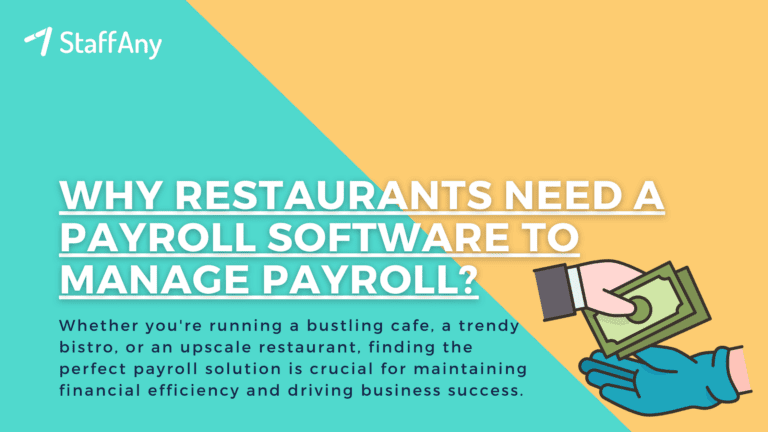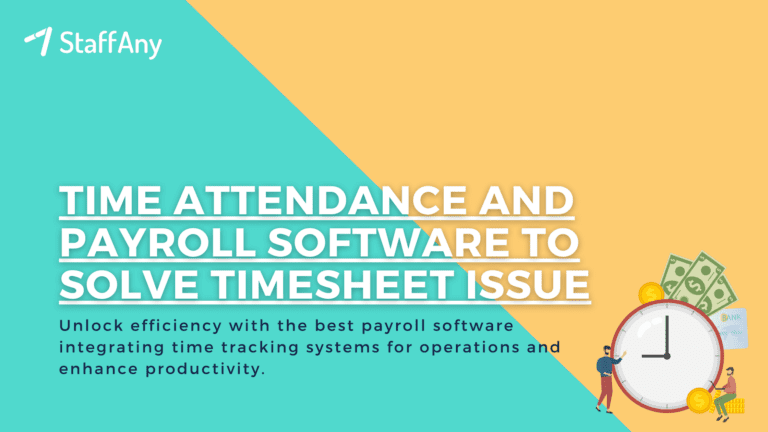In today’s highly competitive restaurant industry, establishing and maintaining strong relationships with customers is paramount. Restaurant Customer Relationship Management (CRM) plays a pivotal role in achieving this objective. By leveraging CRM strategies and tools, restaurant owners can effectively connect with their customers, enhance satisfaction levels, and foster long-term loyalty.
In this article, we explore the concept of Restaurant Customer Relationship Management, its stages, and the key pillars that contribute to its success. Let’s find out below!
What is Restaurant Customer Relationship Management?
Restaurant Customer Relationship Management refers to the set of practices and strategies employed by restaurants to build and nurture relationships with their customers. It involves leveraging data and technology to gain insights into customer preferences, behaviours, and patterns. By understanding their customers better, restaurants can tailor their offerings, marketing campaigns, and services to meet their specific needs and expectations.
Read more: The Importance of Employee Engagement for Business
5 Stages of Customer Relationship Management
Now that we understand the definition of Restaurant Customer Relationship Management, let’s delve into the five stages that restaurants go through to manage customer relationships effectively.
1. Reaching Potential Customers
The first stage of Restaurant Customer Relationship Management focuses on reaching potential customers and generating awareness about the establishment. This involves implementing effective marketing campaigns through various channels, such as social media, Search Engine Optimization (SEO), online advertising, and partnerships with local businesses. By spreading the word about their unique offerings and value proposition, restaurants can attract potential customers and pique their interest.
2. Customer Acquisition
Once potential customers become aware of a restaurant, the next stage involves converting them into paying customers. This stage includes tactics like offering attractive promotions, providing a seamless online ordering experience, and delivering exceptional customer service. By creating a positive initial experience, restaurants can encourage customers to make their first purchase and establish a foundation for a long-term relationship.
3. Conversion
The conversion stage focuses on turning one-time customers into repeat visitors. Restaurants can achieve this by delivering consistent quality, personalised experiences, and engaging with customers beyond their visits. Collecting customer data, such as email addresses and feedback, enables restaurants to segment their audience and target them with tailored marketing messages. By sending relevant offers, personalised recommendations, and exclusive deals, restaurants can entice customers to return and increase their loyalty.
4. Customer Retention
Customer retention is a critical aspect of Restaurant Customer Relationship Management, as it involves nurturing existing customers and ensuring their satisfaction over time. Restaurants can achieve this by consistently providing high-quality food, excellent service, and memorable experiences. Regularly engaging with customers through various touchpoints, such as social media, email newsletters, and loyalty programs, helps keep the restaurant top-of-mind. By actively seeking feedback and promptly addressing any concerns, restaurants can build trust and loyalty among their customer base.
5. Customer Loyalty
The final stage of Restaurant Customer Relationship Management aims to foster strong customer loyalty. Loyal customers not only become advocates for the restaurant but also contribute significantly to its revenue. To enhance loyalty, restaurants can implement loyalty programs, VIP perks, and personalised rewards. These initiatives make customers feel valued and appreciated, further solidifying the relationship. Additionally, encouraging customers to provide online reviews and share their positive experiences on social media platforms can generate word-of-mouth referrals and attract new customers.
Read more: 11 Effective Restaurant Risk Management Strategies
5 Main Pillars of Customer Relationship Management
Now that we understand the stages of Customer Relationship Management, let’s explore the five main pillars that contribute to its success.
1. Data Management and Analysis
Effective CRM relies on accurate and comprehensive data collection. Restaurants should invest in a robust CRM system that captures customer information, such as contact details, order history, preferences, and feedback. By analysing this data, restaurants can gain valuable insights into customer behaviour, identify trends, and make data-driven decisions to improve their offerings and marketing strategies.
2. Personalization and Customization
Personalisation is key to successful Restaurant Customer Relationship Management. By tailoring experiences and offers to individual customers’ preferences, restaurants can create a sense of exclusivity and enhance customer satisfaction. This includes personalised marketing messages, special promotions based on past orders, and recommendations tailored to customers’ tastes.
3. Communication and Engagement
Maintaining open lines of communication is vital in CRM. Restaurants should engage with customers through multiple channels, such as social media, email, and SMS marketing. Regularly updating customers about new menu items, upcoming events, and special promotions keeps them engaged and interested in the restaurant. Promptly responding to customer queries and feedback shows that their opinions are valued and strengthens the relationship.
Read more: Restaurant Management Plan: Benefits & Development
4. Seamless Technology Integration
In the digital age, integrating technology seamlessly into CRM processes is essential. Restaurants should leverage online ordering platforms, reservation systems, and customer feedback tools to streamline operations and enhance the overall customer experience. By investing in user-friendly technology solutions, restaurants can simplify processes and provide convenience to their customers.
5. Staff Training and Customer-Centric Culture
The success of Restaurant Customer Relationship Management heavily relies on the restaurant staff. It is crucial to train employees to provide exceptional customer service, understand the importance of CRM, and effectively utilise CRM tools. A customer-centric culture should be fostered, ensuring every employee is committed to delivering outstanding guest experiences.
Read more: 11 Examples of Good Customer Service in F&B Industry
Benefits of CRM In Restaurant
Customer Relationship Management (CRM) systems can offer various benefits to restaurants, helping them enhance customer experiences, streamline operations, and boost overall business performance. Here are some specific benefits of CRM in the context of a restaurant:
1. Customer Loyalty and Retention
CRM systems allow restaurants to collect and analyze customer data, enabling them to understand customer preferences, ordering habits, and feedback.
Personalized promotions and loyalty programs can be implemented based on customer data, encouraging repeat business and fostering customer loyalty.
2. Improved Customer Service
CRM systems help restaurants keep track of customer interactions and preferences, enabling staff to provide a more personalized and efficient service.
Customer feedback and reviews can be recorded and analyzed to identify areas for improvement and address any issues promptly.
3. Order and Inventory Management
Restaurant CRM solutions can integrate with point-of-sale (POS) systems, helping restaurants manage orders, track inventory levels, and streamline the overall ordering process.
Automation of order processing and inventory management reduces errors and ensures a more efficient operation.
4. Targeted Marketing Campaigns
Using CRM data, restaurants can create targeted marketing campaigns to reach specific customer segments.
Promotions, discounts, and special offers can be tailored to individual customer preferences, increasing the effectiveness of marketing efforts.
5. Data-Driven Decision Making
Restaurants can use CRM analytics to gain insights into customer behavior, preferences, and trends.
Data-driven decision-making helps in shaping menu offerings, pricing strategies, and marketing initiatives.
6. Table Reservation and Seating Optimization
CRM systems can facilitate the management of table reservations, helping restaurants optimize seating arrangements and reduce waiting times.
Information about customer preferences, such as seating preferences or special requests, can be stored and used to enhance the dining experience.
7. Integration with Other Systems
Integration with other systems, such as online ordering platforms, social media, and email marketing, allows for a seamless flow of information.
This integration ensures that customer data is consistent across various touchpoints, providing a unified experience for customers.
8. Efficient Staff Management
A restaurant CRM software can assist in staff scheduling, training, and performance monitoring.
By understanding peak hours and customer demand patterns, restaurants can optimize staffing levels to ensure a smooth and efficient operation.
9. Customer Feedback and Reviews
A restaurant CRM system enable the collection and analysis of customer feedback and reviews.
Restaurants can use this information to identify areas for improvement, address customer concerns, and highlight positive experiences.
10. Competitive Advantage
By leveraging restaurant CRM data to offer personalized experiences and efficient services, restaurants can gain a competitive edge in the market.
Meeting and exceeding customer expectations can lead to positive word-of-mouth and increased customer acquisition.
Implementing a CRM system tailored to the specific needs of a restaurant can significantly contribute to its success by enhancing customer relationships, optimizing operations, and driving business growth.
Read more: 11 Ways How to Improve Restaurant Customer Service
In today’s dynamic restaurant industry, effective customer relationship management is crucial for success. By implementing the stages and pillars of restaurant customer relationship management, you can create meaningful connections with your customers, drive loyalty, and boost your business.
To streamline your HR processes and gain valuable insights into your workforce, consider leveraging StaffAny’s HR reporting software. With real-time reports and data analysis capabilities, StaffAny empowers you to make informed decisions, optimise staffing, and enhance your restaurant’s customer relationship management efforts. Contact us to learn more and take your restaurant’s CRM to the next level!











